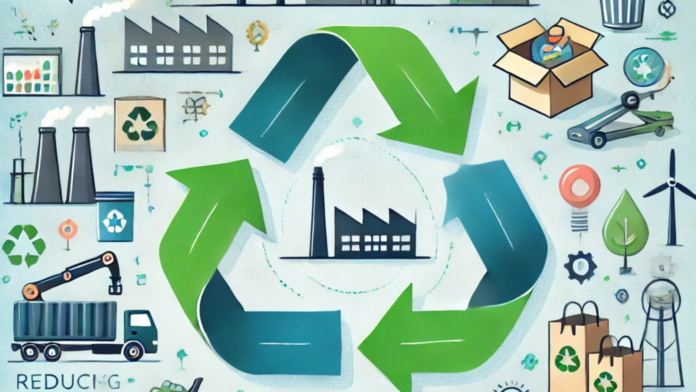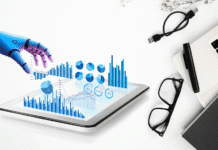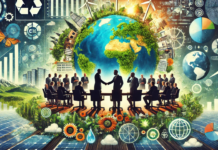In today’s business environment, sustainability is no longer a choice—it’s a necessity. One of the most effective ways businesses are addressing this challenge is through the circular economy. Unlike the traditional linear model of “take, make, dispose,” the circular economy emphasizes the continual use of resources, reducing waste, and maximizing the lifespan of products and materials. Let’s explore how the circular economy can significantly reduce waste in business operations and its long-term benefits.
What is the Circular Economy?
The circular economy is a regenerative system designed to keep resources in use for as long as possible. It focuses on extending the lifecycle of products, rethinking waste as a resource, and encouraging business models that promote reuse, recycling, and redesign. In essence, it’s about creating a closed-loop system where materials are continuously cycled back into the economy.
Key Principles of the Circular Economy
There are three main principles that define the circular economy:
1. Design Out Waste and Pollution
Circular business models prioritize product designs that minimize waste. This includes using sustainable materials, simplifying product designs for easy disassembly, and developing goods that are more durable and easier to repair. By designing with longevity and recyclability in mind, businesses can prevent waste before it’s even created.
2. Keep Products and Materials in Use
The circular economy seeks to keep products and materials in circulation for as long as possible. This is achieved through repairing, reusing, refurbishing, and recycling. For businesses, this means rethinking product life cycles and developing services that help customers repair or return used products rather than throwing them away.
3. Regenerate Natural Systems
Instead of merely minimizing harm, the circular economy aims to have a positive impact by restoring and regenerating natural systems. This could involve using biodegradable materials that return to the earth without harm or investing in renewable energy to power business operations sustainably.
Benefits of the Circular Economy for Businesses
1. Cost Efficiency and Resource Security
Reducing waste and extending the life of products can significantly cut costs for businesses. By reusing materials, companies reduce the need for raw material extraction, which can often be costly and unsustainable. Circular strategies also protect businesses from the volatility of resource prices and supply chain disruptions.
2. New Revenue Streams
Circular economy models open up innovative revenue streams. For example, businesses can offer product-as-a-service models, where customers lease or subscribe to products instead of buying them outright. Companies can also sell refurbished products or collect end-of-life goods for recycling and resale.
3. Improved Brand Image and Customer Loyalty
Consumers are increasingly valuing sustainability and supporting businesses that demonstrate environmental responsibility. Adopting circular economy principles enhances a company’s reputation, strengthens customer loyalty, and can even help attract new markets of eco-conscious consumers. By reducing waste, businesses not only benefit financially but also earn the goodwill of a more socially responsible market.
4. Regulatory Compliance and Risk Management
With stricter environmental regulations and higher expectations from investors regarding sustainability, transitioning to a circular economy helps businesses stay ahead of regulatory changes. It also reduces risks related to resource scarcity, environmental damage, and regulatory penalties.
Examples of Circular Economy in Action
1. IKEA’s Circular Hub
IKEA is transitioning towards a circular economy by offering second-hand furniture through its Circular Hub, where customers can return used furniture for resale. The company also provides parts for repairing their furniture, thus extending product lifecycles and reducing waste.
2. Patagonia’s Worn Wear Program
Patagonia encourages customers to repair their clothing instead of buying new items through their Worn Wear program. Customers can trade in used clothing for store credit, and Patagonia resells these items, promoting reuse and keeping materials in circulation.
3. Apple’s Recycling Initiatives
Apple has made strides toward a circular economy by introducing its recycling robots, Daisy and Dave. These robots can disassemble iPhones and other products to recover valuable materials, like rare metals, which can be reused in new devices.
Transitioning to a Circular Economy: Challenges and Opportunities
While the benefits of adopting circular practices are clear, transitioning to a circular economy is not without its challenges. Shifting from a linear to a circular model requires redesigning products, rethinking supply chains, and fostering collaboration between industries. Businesses must also invest in educating their employees and customers about the importance of reuse, repair, and recycling.
However, these challenges are accompanied by significant opportunities. As governments and consumers alike push for more sustainable solutions, businesses that adopt circular economy principles early will be well-positioned to lead in this new era. Those that embrace this model can gain a competitive advantage, cut operational costs, and future-proof their businesses against environmental and economic challenges.
Conclusion
The circular economy represents a paradigm shift in how businesses think about resources and waste. By keeping products and materials in circulation, businesses can reduce waste, cut costs, and improve sustainability. As we move toward a future where sustainability is increasingly demanded by consumers, investors, and regulators, businesses that adopt circular economy principles will stand out as leaders in innovation and environmental responsibility.
In a world where resources are finite, the circular economy offers a pathway to a sustainable, prosperous future for businesses and society alike.















